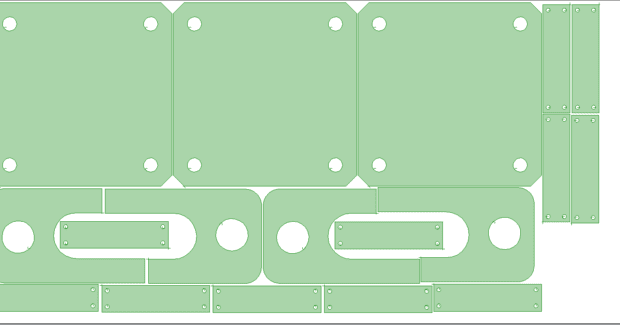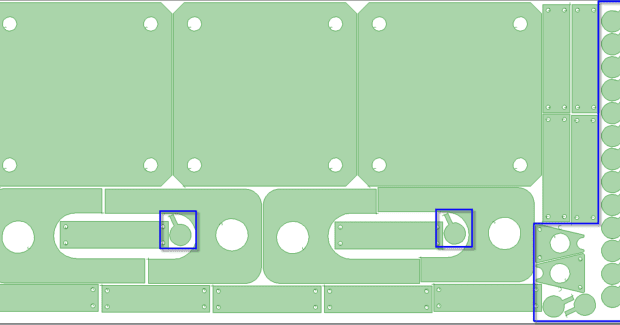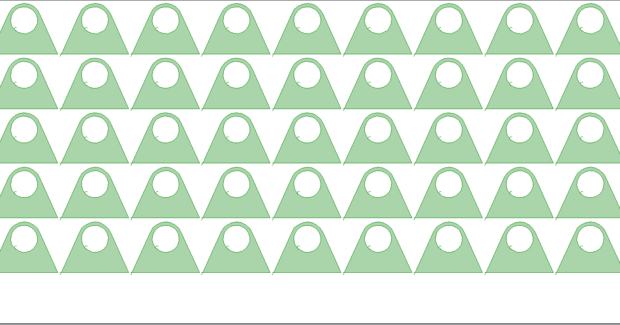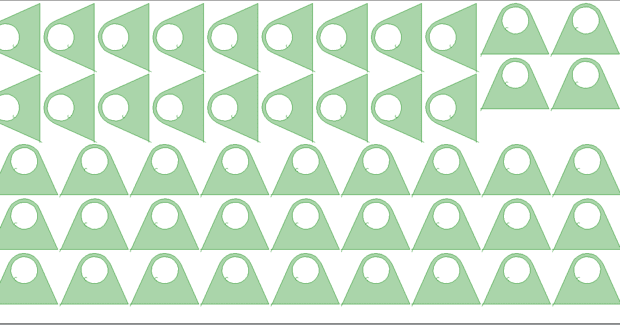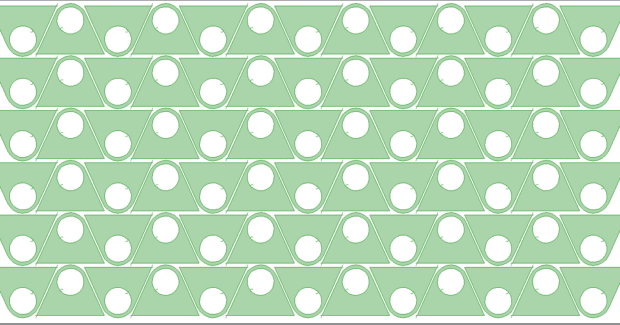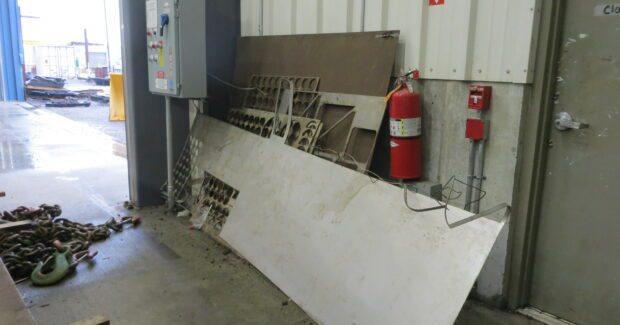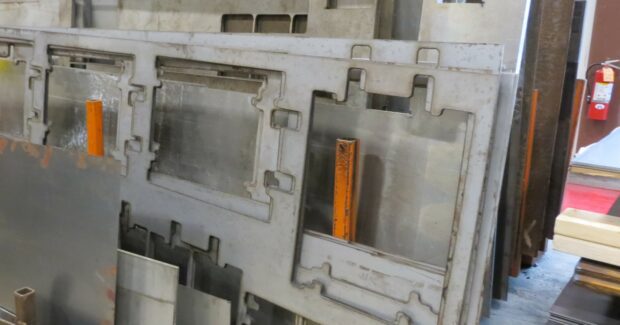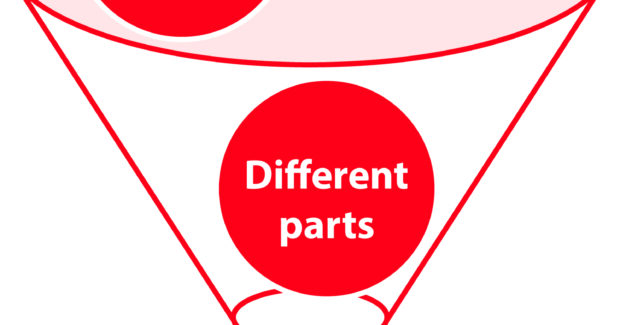10 WAYS TO DECREASE COSTS BY INCREASING PLATE UTILIZATION
Every extra part wrung from the same piece of raw and remnant material is money in your pocket. Here’s how to significantly increase earnings.
Posted: January 13, 2020
Let’s say you paid $770 per ton for ½-inch sheet steel. How many employees and pieces of equipment were used to store it? Move it to the production line? What percentage of each sheet was turned into a revenue-producing part rather than scrap that to be hauled away and stored?
All that activity eats into your profits. Therefore, every extra part you can wring from the same piece of raw material is money in your pocket. According to our estimates, if you’re processing 250 tons per month, a 4% reduction in scrap production could increase earnings 21% over a full year for a two-shift manufacturing operation. That 4% is also the carbon equivalent of not driving 140,000 miles.
Whatever your motivation, there are compelling reasons to invest in nesting software. When fully exploited, such programs greatly decrease costs by increasing material utilization. Here are 10 tips to help you on your way:
1. SELECT THE OPTIMAL PLATE SIZE
If you’re running large quantities, see which plate width and length options your machine can accommodate to understand which size optimizes utilization. You may want to consider investing in a new cutting table to accommodate more plate size options and/or, for very large jobs, asking the mill to quote and supply your optimal plate sizes.
2. OPTIMIZE STORAGE
Make every effort to move away from a cluttered (and often dangerous) mess that makes it difficult to access material. You want a system that enables employees to easily see and safely retrieve the optimal piece of inventory for the job. Organizing this way offers the best utilization for the parts to be nested.
A simple solution is to use bar code labels or scribe marking for easy material identification and retrieval.
Many shops have trouble with remnants piling up on the rack, and programmers not knowing what’s out there or having to take time to run down to the shop floor and take measurements. If you want to choose the best plate for a job, you have to know what’s available.
Nesting software that includes a plate inventory database streamlines nesting and material retrieval by optimizing usage and tracking of the optimal remnants or skeletons as well as raw material. You can also store details like stock number, unit price, heat number, and material cost. This drives utilization by giving the programmer all the information he (or she) needs to optimize your inventory.
For example, the programmer can see an image of a remnant with all dimensions and the machine operator can easily locate it when it’s assigned to a job. Customers who’ve adopted this approach say it reduces the amount of inventory on the shop floor because they’re using up the remnants and, as a result, their holding costs go down.
3. AGGREGATE PARTS
Wherever possible, aggregate parts to nest full sheets. The more parts you can include in the job, the better the opportunity for your software to increase yield.
There are at least two ways to do this.
4. TAKE ADVANTAGE OF COMMON-LINE CUTTING
Common-line cutting refers to any time two or more nested parts share the same edge. The methodology eliminates the waste from material separation between parts but also reduces the number of pierces and overall cutting distance, becoming another approach to reducing scrap and increasing productivity.
Operators should pay particular attention to this tip if your shop cuts a lot of parts with straight edges.
5. USE THE PLATE EDGE
Similar to common-line cutting, you can also position a part to share a line with the plate edge. If the edge is reasonably straight and the resulting part quality meets requirements), this lowers cutting cycle time in addition to reducing waste.
6. (CAREFULLY) OPTIMIZE LEADS
Some nesting programs automatically select and apply lead style and lead length. Based on your experience with cutting jobs, you might find the software applies longer-than-necessary leads or they could be relocated to allow tighter nesting.
In these scenarios, it’s possible to manually edit default lead locations, style, and length in order to optimize leads. However, if you decide to make changes, be aware you’re increasing the risk of damaged parts, so this tip may be best suited to advanced users.
7.OPTIMIZE SEPARATIONS
Parts separations is similar to the situation with leads: The nesting software may automatically set values based on material type and thickness for each job. You typically get the recommended spacing, but you can adjust these settings if preferred.
8. TEST ALTERNATE NESTING STRATEGIES
Automatic nesting is a great tool for many jobs, but not all nesting strategies are created equal. If you’re going to use automatic nesting, compare a few strategies to ensure you get the best results.
Some basic nesting software only uses “rectangular nesting” in which the program places an imaginary rectangular border around each part. Parts are then nested in such a way that no part overlaps into the rectangular border of another part.
This is effective for parts that are mostly rectangular, but not for irregularly shaped parts. The preferred strategy for irregularly shaped parts is “true shape nesting,” which enables parts to be nested closer together for greater overall plate utilization by recognizing the actual part geometry.
9. CREATE NEW USES FOR SCRAP
Are you secretly a frustrated artist? If so, use that talent to market your company or to sell online.
Companies such as Scan2CAD and CNC Cookbook often have free CAD drawing exchange format (DXF) files you can download to use in fabricating small promotional items. So does www.cncgcode.weebly.com. LoveSVG (for “scalable vector graphics”) offers free cut files in SVG, DXF, EPS and PNG formats for personal use.
Your goal is to create new uses for material that would otherwise go to waste.
10. MAXIMIZE SCRAP VALUE
Don’t be tricked into getting complacent about scrap because you view it as a revenue or “already paid for” by the contract or the customer. Scrap is waste, pure and simple. Always seek to maximize revenue and profit by:
- Involving internal commodity purchasing experts or raw material buyers in scrap price negotiation
- Renegotiating annually
- Visiting isri.org to check commodity pricing and learn about changes in the scrap market
- Auditing annually or semiannually.
BONUS TIP: HOW TO PROVE IT’S WORKING
I’m sure you’ve heard the adage that you can’t manage what you don’t measure. Once they’re developed and become routine, these four steps will go a long way toward overcoming employee resistance to change:
- Designate someone with standing within your company to “own” scrap management by regularly running a utilization report, such as weekly or by job, using your nesting software.
- Measure scrap and utilization by job, and look for trends.
- Use data to identify the jobs, or job types, with the highest scrap levels and target them first for improvement.
- Weigh scrap before it’s removed by your vendor.



